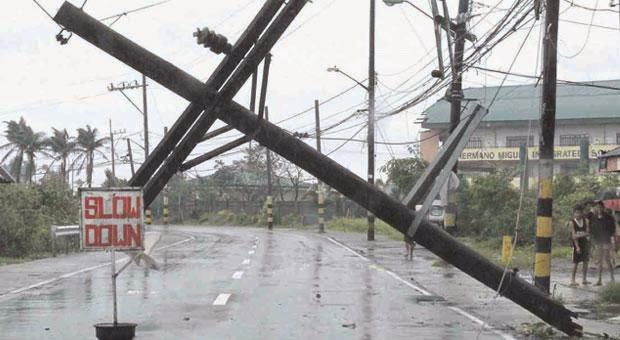The forecast of the international weather watch community for selected parts of Asia is light to heavy rain. For Manila, Philippines and major cities like Cebu, Davao, other parts of the Southeast Asian country, varying forecasts of Tuesday-to-Friday (August 5-8) continuous rains and Wednesday-to-Friday (August 6-8).
It is inevitable that this will impact once more upon power facilities. If countermeasures are still not being undertaken to buffer the effect of heavy rain and gale force winds brought about by Typhoon Halong (Philippine code Jose), the public may once again anticipate possible power outages in selected areas in the country.
While media reports that the typhoon has weakened over time, it must be noted that storms are invariably finicky and can regain strength at any time. On numerous occasions, typhoons that made landfall in the Philippine area of responsibility (PAR) and exited after some time, gather greater momentum and returns for another landfall in the PAR.
As the forecasts go, there is more rain than powerful, destructive winds that indubitably are the cause of storm surges.
As earlier cautioned on July 13, 2014, necessary steps must be taken to forestall sustaining great but unnecessary damage to power facilities. Thus it is most strongly suggested that, despite the burden of cost, retirable and extremely depreciated installations need to be condemned and replaced. Retrofits and repairs have to be conducted, more so now than ever before.
More efficient and more effective monitoring systems have to be put in place to pinpoint at once all kinds of non-regular performance of components of the distribution system.
Needless to say, the downtime and the cost to the power supplier but most of all the public at large becomes too enormous to bear when stopgaps that are doable are not put in place while there are occasions to do so.
Furthermore, appropriate new technologies for safeguarding the distribution process from tripping or sustaining enormous damage that will surely entail costly repair and rebuilding, ought to be acquired or harnessed to their fullest. More often than not, new methods and technologies form part of the set of stop gaps that power service providers must have to have better staying power.
It is possible that Meralco did not have good pro-active measures, a keenness to acquire or harness new technologies and techniques because it sank into the quagmire of debts amounting to staggering amounts like hundreds of millions to billions of US Dollars. As a result, Meralco today, is 51% owned by PLDT that is run by Mr. Manuel V. Pangilinan that in turn is taking orders from Indonesian and Malaysian investors (Salim Group) that holds the bigger stake in PLDT.
The irony is that, both PLDT and Meralco, are engaged in public services that ideally, should never be in the hands of foreigners as much as humanly possible.

Any enterprise in the power sector that will suffer the same fate as that of the Fukushima Power Plant (of Tokyo Electric Power Co.) knowing that pro-active measures could have been taken in advance, would be foolish to absorb losses that could really be avoided in the first place. If the public sector is vigilant, such utility corporations should be stripped of their license and permit to operate electric power distribution services and the opportunity needs to be handed over to more competent and qualified service providers.
A collage of images of damaged power utility facilities alone should give a hint as to the urgency of undertaking advanced planning and early countermeasures, particularly in these times of worsening calamities.
July 15-18, 2014 Philippines
Around the rest of the country and in South China (lowermost photo), the impact of Glenda on installations was staggering. (Photo credits: ANC - Yahoo; AvaxNews - Adrian Ayalin; Philippine Daily Inquirer; Straits Times)
July 19, 2014
Posted under themes:
damage, installations, Sorsogon, typhoon #Jose, #Halong, power utilities,pro-active measures





















0 comments :
Post a Comment